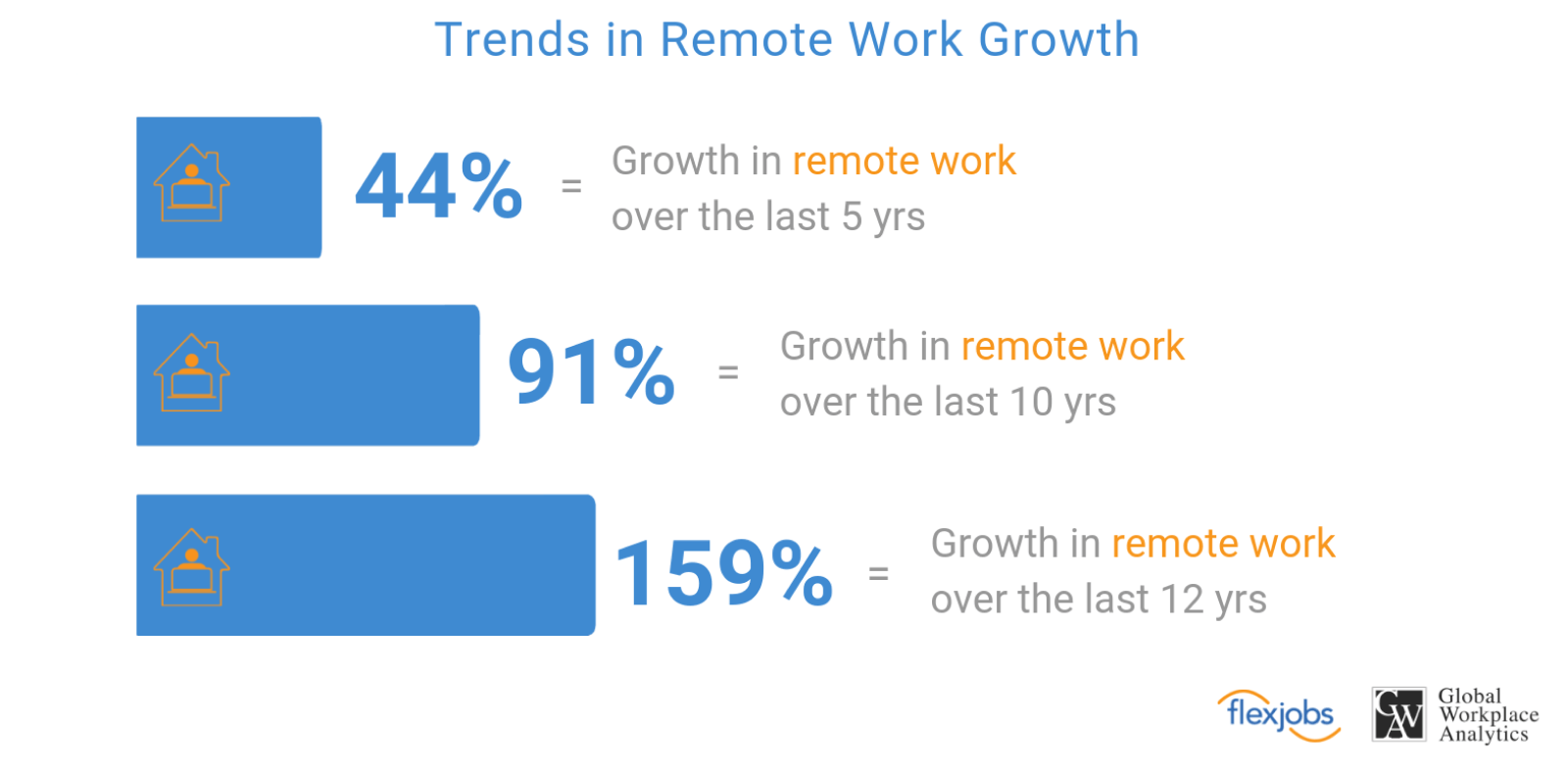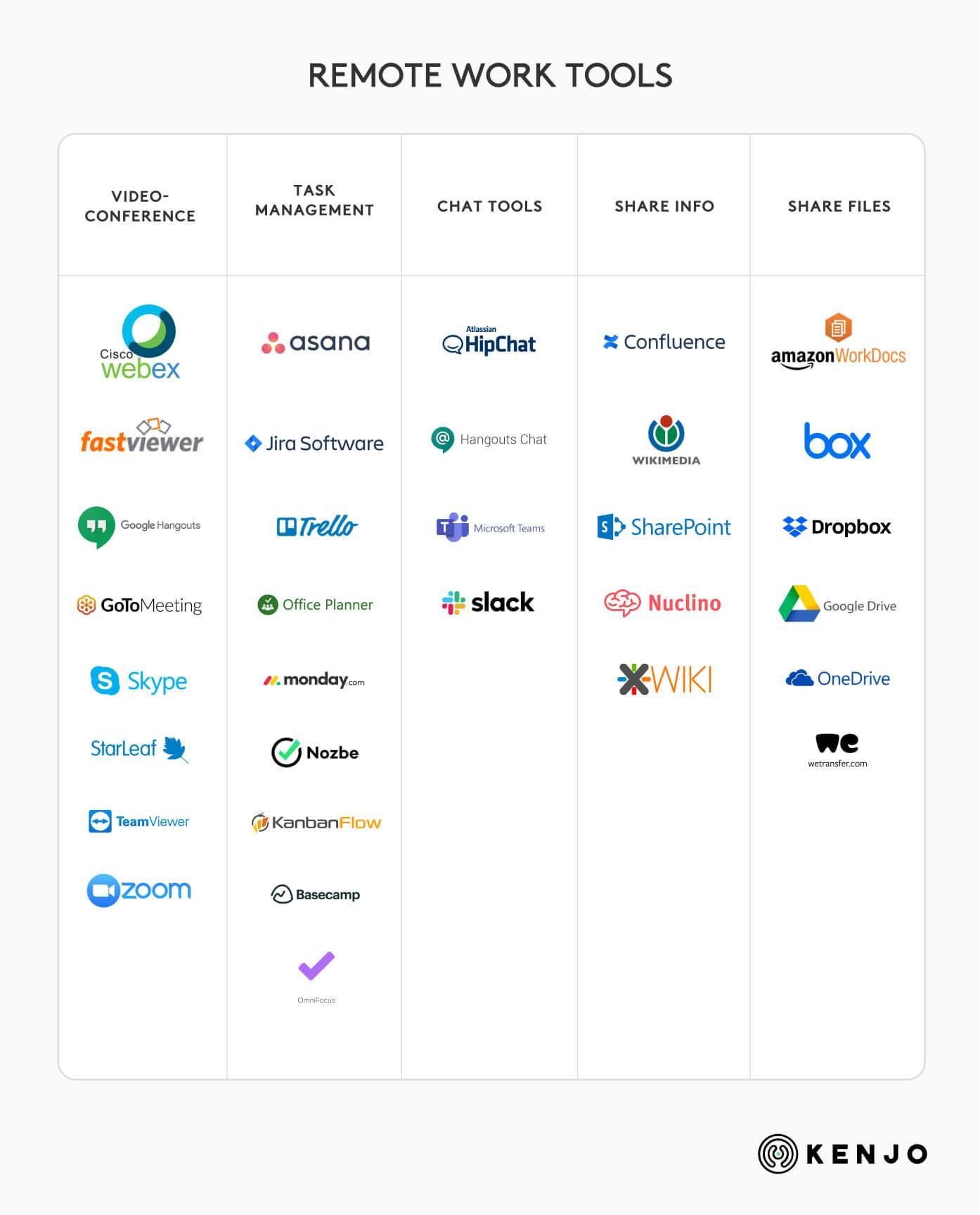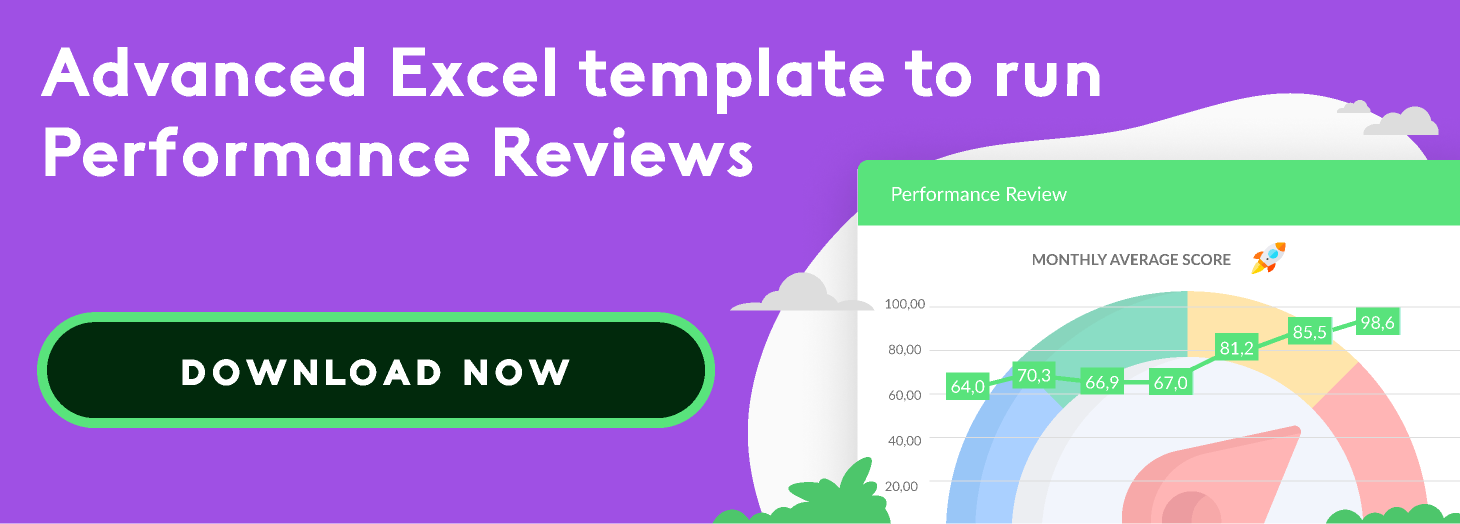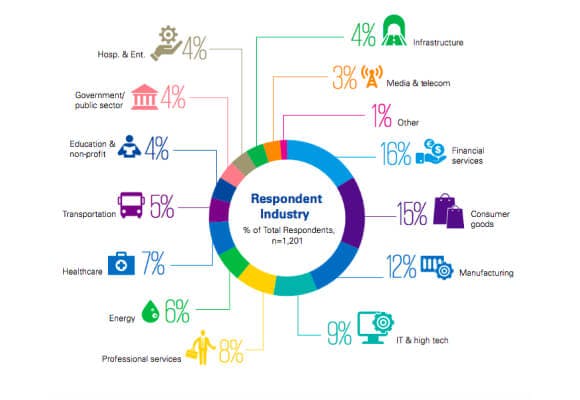Table of Contents
Having been forced into working remotely has taken us all by surprise in 2020. While some companies were already making the switch, most scrambled to adapt to this new reality against the clock.
In fact, they say it’s here to stay. In some European countries, such as Spain, governments are already drawing up new laws to regulate and facilitate remote work. So if this is the future, there’s no better time than the present to make the change.
We’ve put together this comprehensive guide to answer any queries you may have about working remotely .
Difference between teleworking and telecommuting
Remote working or teleworking literally allows you to work from anywhere; with no restrictions on time zones, state, or country. You’re not expected to come into the office and your everyday working routines are organised around that.
For telecommuting on the other hand, they often maintain a traditional office and usually alternate between their offices and working from home, for example for various projects on-site with clients.
Both concepts of telecommuting and telework are closely related, so we’ll have a look at both of them.
The importance of remote working in times of coronavirus
COVID-19 has obliged us to maintain social distancing, at least for the time being. This has meant that places where groups of people usually gather are empty: stadiums, discos, concerts and, of course, offices.
For the most part, working remotely has become the only means of survival for companies and businesses all over the world, and therefore, the global economy. Making people work from home is what has enabled us to carry on.
And incredibly, working remotely wasn’t that common until a few months ago. Remote work statistics have rocketed as a result of the Covid-19 crisis. A study byOpinium in May 2020revealed that 69% of British workers were working from home, compared to 9% before the pandemic.
Some activities cannot be done from home. In Spain, for example, 49.8% of technicians and scientific professionals have the possibility of working remotely along with 20% of accountants, administrative employees and other office workers.
But these figures pale in comparison to some of their European neighbours. The Netherlands(14%), Finland(13.3 %)and Luxembourg(11%) already had more teleworkers before the COVID-19 crisis (data from Eurostat 2018 and shared by epdata) as mentioned in our article onremote work statisticssome months ago.

Teleworker performance
One major concern that has arisen in relation to remote working is the productivity or performance of remote workers, especially in companies who aren’t used to this model.
But the truth is, remote working is synonymous with productivity. And the data backs it up: 42% of professionals say they are more productive working from home (study by Zapier) and some companies have observed an increase of 20% in team performance. So, we recommend that you have confidence in your teleworkers.
Nevertheless, the best way to clear any doubts is to measure employee performance regularly. To do that, you have to develop a plan that fits into the current context and which clearly defines what you want to measure, and how you’re going to do it.
There are different ways of measuring remote worker performance. It’s best to choose and stick to one, but you can combine several methods at the same time.
Quality and quantity instead of time spent
There are two remote work KPIs to measure in this case: the number of tasks completed and the quality of the outcome. To evaluate the performance, compare the results of two employees of the same grade. If one of them completes half of the tasks in the same period, then you need to look a little deeper into what's going on.
Results
In this article in Talking Talent, founder of Cereslogic.com, Mike Desjardins explains: "if you measure performance accurately in the office, then it won't be so different for remote workers." The best way to measure performance is to look at the results obtained and see if the person is reaching set objectives.
This method works in almost any working environment. Both manager and employee must agree on objectives to reach the desired results. Apart from serving as a point of reference, it helps professionals to channel their efforts better.
Clear metrics and expectations
Another option is creating metrics based on expectations for each employee, or each role within the company. Performance can later be measured against them.
In the same article we mentioned earlier, Business Coach David Schoenbeck also emphasises that “When handing out tasks to individuals on a virtual team, it’s important that you clearly express your expectations. Your explanation should include deadlines and specific details about the task itself."
So we need to establish clear foundations and later measure whether they have been met or not.
Internal feedback
Lastly, we can also use internal feedback for measuring performance. Creating a series of automatic surveys is the best way of doing this. For example, every company employee evaluates other people’s work and answers just two questions: strengths and areas for improvement.
It’s an easy and straightforward way of understanding collaboration levels between teams.
Advantages and disadvantages of working from home
Remote work, like everything, has its pros and cons. This is true from both the employees' and employers' points of view.
Let’s take a look at those advantages from both sides:
Advantages for employees
- Flexibility of working hours: Employees can organise their working day with some level of freedom, although in some companies they are implementing standard working hours to suit meetings, etc.
- Balance of work and family life: working from home with flexible hours helps to balance work with family life.
- Lower stress levels: getting stuck in traffic increases your stress levels by 60%, according to a study by TomTom published in Businesswire magazine. If we take that out of the equation, we’ll have a less stressful life.
- Time savings: the time we save by not commuting enables us to get more out of our day.
- Lower costs: eating at home, less commuting, all this lowers the costs incurred by going into the office every day.
Advantages for employers
- Access to new labour markets: if we don’t expect people to come into the office, we can gain access to new talent and hire people from anywhere in the world.
- Talent retention: professionals are placing increasing value on the option of working remotely and the flexibility of working hours. Companies that introduce teleworking policies will be able to retain talent far easier.
- Lower absenteeism: employee absences and sicknesses will decrease as a result of flexible working.
- Lower structural costs: companies could save as much as 11,000 USD per part-time employee per year (study by Global Workplace mentioned by Forbes).
- Increased productivity: many companies see an increase in productivity in employees who are working remotely. They are more motivated, and many find they can concentrate better at home.
- Working towards objectives: introducing objectives to measure performance while working remotely keeps employees motivated and focused.
Disadvantages for employees
- Feeling lonely: in particular, the more extroverted employees may experience loneliness and isolation while working remotely. To help combat this, the company could organise informal video conferencing charts or virtual coffee breaks every morning.
- A more sedentary lifestyle: not leaving home to go to the office reduces the number of steps we do every day. It's important to stay active, get up from a chair every two hours and take a walk around the house.
- Difficulty in disconnecting after work: it's essential to stick to your working hours. The HR Department must control overtime hours and identify who is working more, and why.
Disadvantages for employers
- Change to the company's organisational culture: adopting a new working model also requires essential changes within the company: processes, methodologies, tools, etc.
- Less teamwork: one becomes more individualised with remote work, which is why you must offer employees communication channels so that they can connect and collaborate with their colleagues.
- Creating a company culture is difficult: creating a remote working culture is complicated, but not impossible. You can create virtual dynamics in small groups to try and foster a sense of belonging.
- Monitoring performance can be complicated: many companies find it difficult to monitor their employees’ performance and productivity when working from home. But performance management software can turn this into an extremely straightforward process.
FOR EMPLOYEES
Advantages
Flexibility of working hours.
Balance of work and family life.
Lower stress levels.
Time savings.
Lower costs.
Disadvantages
Feeling lonely.
A more sedentary lifestyle.
Difficulty in disconnecting after work.
FOR EMPLOYERS
Advantages
Access to new labour markets.
Talent retention.
Lower absenteeism.
Lower structural costs.
Increased productivity.
Working towards objectives.
Disadvantages
Change to the company's organisational culture.
Less teamwork.
Creating a company culture is difficult.
Monitoring performance can be complicated.
Remote work Law in the UK
All UK employees are entitled to request flexible working, as we mentioned earlier. While there have been no permanent changes to date, the UK government published temporary guidance for employers on 11 May 2020, to help them manage working from home during the coronavirus crisis.
They outlined the different workplace settings which could open during the pandemic and guidance on employers' responsibilities under these circumstances.
Companies were told that employees should work from home wherever possible.
Employers had to consider who is essential in the office, and only bring in the minimum number of people needed to operate their business safely and effectively.
The government also urged them to help people to work remotely wherever possible: ensure they have the right equipment (such as access to remote work systems), including all the communications needed while also caring for their mental health and well-being.
From 1 August onwards, the government then announced that it was at the employers' discretion whether to allow people to continue working from home or facilitate their return to the office.
Since April 2003, working parents or carers in the UK were entitled to request flexible working conditions. But this was extended to all workers who have at least 26 weeks of continuous service, in item 131 of the Code of practice published in June 2014, an amendment to section 80F of the Employment Rights Act 1996.
Government aid for teleworking
UK technology magazine Computer Weekly reviewed the changes in the digital business landscape that took place between March and August 2020.
Companies dramatically shifted their stance on digital transformation after lockdown by moving their staff to remote working. London-based developer Studio Graphene went out and asked decision-makers, and 46% said COVID-19 has brought about the most radical digital transformation they’ve ever seen.
Around 50% said that they have started using technology they were previously resisting, and 64% said that they implemented it much faster because of the crisis. Darrius Jones, Executive Vice-President and Chief Strategy Officer at Poly believes that:
"The next normal is all about hybrid working moving into the mainstream as we respond, redesign and reinvent - flexible working across multiple locations, with immersive, productive workspaces that accommodate the working style of every employee."
Working from home: trends for the future
So, if hybrid working is the way forward, how are some of the world’s largest organisations tackling this?
Facebook’s Mark Zuckerberg recently promised that at least half of the company’s employees would be working from home by 2030, according to this article in the Harvard Business Review.
This was only a few days before Jack Dorsey announced that employees of his companies Twitter and Square could work from home forever if they prefer.
On the other end of the scale, a survey carried out by Founders Forum and mentioned by the World Economic Forum discovered that 94% of senior-level professionals said they were able to accomplish most of their work from home during the pandemic.
Based on their responses, the post-pandemic work scenario could see employees spending 3 to 5 days of their week working remotely. Over 92% of respondents said they wanted to have the option of remote working.
Also, over half of those interviewed said they were more productive at home, although 55% also reported longer working hours.
Maintaining a work-life balance is one of the biggest challenges of remote working. Eurofound published a research report, Regulations to address work-life balance in digital flexible working relationships which looks into the different approaches being taken to encourage this in various European countries.
How to implement remote work in your company
A great number of companies have been taken completely by surprise and have had to implement remote working at the last minute. And this has undoubtedly caused a few headaches.
Even so, by following a few simple steps, you can make the whole process more fluid and enjoyable for everyone.
Define which employees can easily adapt to working remotely
According to the UK Working Time Regulations, all employees have the right to request flexible working.
While not all professions can be done remotely, countless activities can be carried out from almost anywhere, thanks to the technology available today.
According to a study by the Banco de España, 49.8% of technicians and scientific professionals have the possibility of working remotely, along with 20% of accountants, administrative employees and other office workers. The situation is the same with directors and managers or support technicians and professionals.
Logically, this is more complicated in the case of those working in restaurants, agriculture, facilities and machine operators, the military, etc.
There's also the question of interns who generally need supervision as part of their university studies which require a certain number of presential allows every month.
So, when planning your telework strategy, it’s crucial to analyse who can adapt to this model, depending on the activity or conditions.
Establish a work from home policy
The next step is to establish a remote policy for the company which unifies both the processes and tools they'll use, and answers the questions that most frequently arise.
There are numerous examples of remote work policies available that have been created by companies who spent years working remotely: GitLab, Zapier, ArtNight. You can use these for inspiration and as a reference when creating your own.
Remember that it's crucial that everyone in the company has access to this document and that you update it whenever necessary, depending on any issues that arise.
Provide your employees with the resources they need to work remotely
Employees need a dedicated workspace at home to ensure a smooth and pleasant remote working experience. And it's the company that has the responsibility of providing the resources they need to do this. This usually includes:

Internet connection

Laptop

Computer monitor

Ergonomic office chair
When the pandemic started, many companies were forced to send all of this material to their respective employees' homes, and practically overnight. Sandra Wulff, Human Resources Director at Goodpatch GmbH, told us in an interview that, at the beginning of March "we transported screens, chairs and technical equipment to everyone who needed to create a workstation at home. That way, we could ensure that everyone felt comfortable and carry on with their work and routines from home”.
Implement the necessary technology

- Task and project management tools.
- Team communication tools.
- Video conferencing software.
- Cloud-based storage systems.
- Human resources software.
- Accounting software.
It's crucial to assess which tools help to improve your internal processes and make working from home easier.
Foster good team communication
In any company, communication is key, but it becomes critical when the team isn't sharing the same workspace. If we don't create suitable alternative communication channels, we'll lose those casual office chats. At the same time, we run the risk of inundating each other's inboxes with quick questions and debates that create endless email trails.

It's essential to find the balance and use channels appropriately. You can use a team chat channel for sending documents, notifications, asking a range of questions, etc. Video calls are useful for meetings and brainstorming, and email should, above all, be used to communicate with people outside the company.
We need to be organised, consistent and use them appropriately. For example: holding several video calls every day is not very productive, but we should have them at least once a week.
Supervise the work of your entire team
There are two ways to supervise remote teams, which can also be used together:
- Use task management tools to see what they’re currently working on, and how projects are going.
- Set objectives and track whether or not they are being met.
Implementing the first method requires a project management software. They are intuitive yet simple to use at the same time: you create a card for each task and assign it to the employee responsible, along with the deadline. Likewise, these cards are placed in one of three columns depending on their status: pending, in progress, and completed.
You can, therefore, see the status of each project, at a glance. You can even filter them by employee and see which tasks they have pending and if they will meet agreed deadlines.
On the other hand, we can also evaluate remote employees through OKRs (OKR stands for Objective and Key Results). This method enables you to set specific objectives and results for each employee.
Measure employee performance through OKRs
Let's look at an example:
Objective: increase sales.
- Key Result 1: double monthly sales leads.
- Key Result 2: reduce our sales cycle by 10%.
This method will give you a clear reference point for measuring and evaluating the performance of teleworkers. And it's important that objectives are set together, and that both parties are happy with them.
Remote working software
Remote working software plays a fundamental role. Apart from an Internet connection and a computer, you also need programmes and tools that solve the problems that can arise when working remotely, such as team communication, meetings and organising daily tasks.
Here is a summary of some of the most useful types of remote work technology:
Task management software
This enables you to plan your working day by organising and assigning project tasks to ensure efficiency and meet agreed deadlines. The advantage of task management software is that both team communication and productivity improve automatically.
And they are also extremely user-friendly. You create a card for every task which shows who is responsible and the deadline for completion. You then place the cards on a digital board and arrange it in columns according to status: pending, in progress and completed. This is usually known as the Kanban method of project management.
Let's look at some of the solutions available on the market.
Trello
This is a well-known free software based on the Kanban method. It enables you to create boards in whichever way you prefer, adapt them to your needs and share them with your team. Trello is intuitive and straightforward, so it's a great starter option.
Asana
Asana is probably one of the most comprehensive and customisable solutions. You can choose how you want to view the tasks (in list, columns or calendar format) and store documents within the app itself. You can opt for their free version which is limited by the number of users, or their paid version.
Basecamp
One of the main reasons Basecamp is different is because it has a board for publishing updates and a chat feature for brief and informal team conversations. The rest of its features are similar to other software. Basecamp is paid with a fixed monthly fee.
Communication software for teams
All team communication tools are instant messenger apps that include additional features such as the ability to send documents, create group conversations, video calls, etc.
The objective is to make every day office conversations easier and also provide a communication channel that's much more agile than email. This has a direct impact on productivity.
Google Hangouts
Google Hangouts is a chat app associated with a Gmail account. It's really simple and even enables you to create group conversations and send documents (albeit only in limited formats).
The main advantage of Google Hangouts is that it integrates with email and you won't need to use several tools. You can also start chats with contacts who also use Gmail. It's convenient for asking quick questions.
Slack
Slack is one of the most popular team messaging solutions. It's very comprehensive, as it not only does it enable you to hold conversations between two people or more, but any documents you send are also saved to a file. It has a search function which makes conversations and files easy to find, and you can also integrate other everyday applications you usually use. Choose from free or paid versions.
Skype
While Skype is better known for video calling, many companies also use it as an internal chat. It works similarly to Slack, but it's more limited because it doesn't allow integration with other applications.
It's a great solution for those who are looking for a chat and video conferencing software, but little else.
Absence management tools
The human resources department has the task of tracking team absences and holidays. The best way to do this remotely is to use dedicated software that helps you track this, but that's also simple to use.
This software is cloud-based meaning that employees can connect to HR and share all their information: holiday requests, authorisations for absences and maternity/paternity leave. This reduces the need for email and avoids potential errors.
Kenjo
Kenjo is a human resources software with a range of features that includes an absence management function. With Kenjo you’ll be able to:

Better control employee absences.

Get access to real-time information.

Optimise processes.

Synchronise employee absences with Google and Microsoft calendars.

Synchronise Slack with employee absence statuses.

Generate advanced reports to analyse trends.
Performance management software
These tools enable you to assess the quality of work being done remotely. It helps you define the methodology, create questionnaires, gather feedback, prepare reports and conduct appraisals for every employee. In other words, you can perform the entire process on a single platform.
Companies usually evaluate employees a few times a year, but this kind of software makes everything so easy that you could do it more often (especially when working remotely).
Kenjo
Once again, our all-in-one HR software gives you the option of effortlessly implementing 90º, 180º or 360º performance reviews. You can personalise questionnaires, keep track of feedback processes, create reports and receive regular information about each employee's performance — all in a single platform.
Add these two other features such as OKR tracking and employee satisfaction, and you have full control over your workforce's motivation performance.
Video conferencing software
Using software for hosting video calls is essential when working remotely. It enables teams to see each other virtually and record sessions if necessary.
While there are many solutions on the market, it's essential to choose one that works well and allows you to invite several people to the same conversation.
Zoom
Zoom has boomed during the lockdown. During January and February this year, 2.22 million people downloaded the app, according to an article in Wired.
Its simplicity is one of the main reasons for its success; nevertheless, it's free plan limits your calls to a maximum of 40 minutes. Zoom's paid plans give you unlimited use.
Hangouts
Hangouts is Google's video conferencing tool and, once again, it's associated with a Gmail account. If your company uses this service, then Hangouts is very convenient. And it works exceptionally well.
Skype
Skype is one of the most popular companies, being one of the first to offer a video calling service. And it’s still the software of choice for many companies.
Time management tools
Companies in Europe must track employee time and attendance of each employee’s working day, including those who are working remotely. And in the UK, you must keep these records for at least two years.
It's up to companies to choose which system they prefer to comply with this obligation; nevertheless, it's vital to choose one which enables employees to clock-in and out remotely. A system that facilitates this from anywhere and from any device is, without a doubt, the most convenient option.
Kenjo
Kenjo also offers a time tracking system which enables employees to clock in and out remotely and complies with the legal regulations. All employees have to do is record their start and finish times in the app.

The HR team, on the other hand, can easily visualise the times recorded and spot employees are doing too much overtime.
Cloud-based storage systems
Cloud storage is handy for remote working as it enables you to share documents and even add comments in real-time. It's basically an online filing system, and you can easily manage user access.
Your information is completely safe in storage software as it encrypted and, besides, the service provider usually forms regular backups.
Google Drive
Google’s cloud-based storage service offers up to 15 GB of free space where you can save all kinds of files. You can also create shared files for real-time collaboration with others.
Dropbox
Dropbox is another popular storage system. The free version offers 2 GB of storage, but you can extend that by up to 2TB of space with a paid plan. It also works with shared files.
Wetransfer
While it's not a storage service, you can send files with WeTransfer. Its free plan only allows files of up to 2 GB and the link expires in seven days; with the paid plan, however, you can send files of up to 20 GB, and you can choose when you want the link to expire. You'll also have up to 1 TB of storage space available.
Password managers
The more tools we have, the more passwords we need to remember. Password managers are a great way to remember passwords and avoid potential future problems caused by forgetfulness. They say your data so that access is automatic, protecting it and enabling us to share it safely.
LastPass
This comprehensive management tool generates strong passwords, stores them and allows you to send them to other users safely. You can opt for the free version although paid plans offer a more comprehensive range of features.
1Password
This software offers the same features as LastPass, although it's slightly more attractive and intuitive. The main drawback is that it doesn't offer a free version.
Common questions when implementing telework
Who provides the infrastructure for remote working? The company or the employee?
Just as what happens in the office environment, it's the company who is responsible for giving employees the necessary tools for working remotely. This generally refers to a computer, an Internet connection and technical support while working from home.
In the months that we were forced to work from home during the pandemic, some companies even sent ergonomic office chairs for comfort, computer screens, footrests, etc., to their employee's homes.
Ultimately, everything they need to be able to work securely and comfortably, just like in the office.
Do you have to manage time and attendance for remote workers?
Yes, all employers have an obligation to keep records of employee attendance, as outlined in the Working Time Regulations (1998). Even though employees may be working remotely, employers still need to track the number of hours worked.
The regulations state that employers must take "all reasonable steps" to ensure that the 48-hour a week limit is observed. Companies are free to choose whichever system they prefer, although it is essential to have one that enables employees to clock in and out from home.
Tracking employee time and attendance is so much easier with the right software. They enable employees to easily input their working hours and also allow HR teams to track them from wherever they are.
What are the best tips for employees remote working for the first time?
None of us instinctively know about nor are used to the real implications of remote work. And whilst it offers tons of advantages, we do have to go through an adaptation process and, in the beginning, a whole host of issues can arise. This is why it's so important to have a remote work policy, on the one hand, and on the other, a good flow of communication for sharing advice that helps everyone in the company.
Take a look at our article about tips for working remotely:

Create a workspace at home (even better if it's separate from everyone else).
Define a daily routine to help you get into “work mode.”
Set specific hours to separate your work and personal life.
Start your morning by organising and prioritising your daily tasks.
Avoid distractions by putting your phone on silent, for example.
Take regular breaks.
Exercise regularly (even better if it’s outside).
Take time to cook regularly and eat healthily.
Take virtual coffee breaks with your colleagues once in a while.
Disconnect completely at the end of every working day.
Download tips for remote working
How can we achieve a work-life balance?
Working remotely isn't going to work out as we’d hoped unless we learn to plan our time and set routines, especially when there are children or other distractions around you.
Balancing the time you spend working and disconnecting in the same physical space can be a complicated business. Those working at home for the first time will usually find themselves in the middle of the task and then remember, for example, they have to hang the washing out. You’d have to go home to do that if you were working in an office, but if it’s right in the next room, why wait? It's a very common mistake that influences employee’s productivity and concentration.

The answer, as we were saying, is to establish a routine and respect it just as though we were in the office. The routine you choose can and should fit around your personal needs; for example, if you have children, you can create one that best adapts to your family life. However, while you're sat in front of your computer, you must concentrate exclusively on what you're doing.
You can reinforce this routine by having a designated workspace that helps you concentrate. Also, do all the things that you would normally do before going to the office: exercise, shower, have breakfast, get dressed: the latter is particularly important as you should not work remotely in your pyjamas. Choose comfortable and informal clothes if you wish, but the most important thing is that you change and that you're presentable.
"Get dressed in the morning, make yourself feel like you’re going to work" is the advice offered in this article in Science Focus. It also mentions that maintaining sleep routines is just as important, avoiding both sleep deprivation as well as oversleeping, as both can damage your cognitive function.
It’s ultimately a question of organising your time and defining what you want to achieve, when, and how much time you need to do it. This, together with a little discipline, will help you to balance and enjoy remote working.
Who is responsible for health and safety when working from home?
The Health and Safety at Work Act 1974 is the primary workplace legislation in the UK. It makes no distinction between home and office workers.

Employers have the same legal duty of care for remote working employees.
According to the Management of Health and Safety Regulations 1999, "employers are responsible for the health and safety of homeworkers, as far as is reasonably practicable." Employers are legally required to carry out a risk assessment of their employees' workplace. This assessment should identify any potential risks so that the employer can remove or mitigate them. Employers do not have to go to their employees home to do the assessment. They can provide them with a detailed self-assessment questionnaire to comply with their legal responsibilities.
How do you hire employees remotely?
All company activities have to continue remotely, including the recruitment of new employees.
Even under normal conditions, we should always try to optimise recruitment processes, but this is even more important when working remotely. Make the most of this time to go over your processes and introduce the necessary changes.
Anna Brandt, an expert in human resource tips, shared 8 tips to hire and manage remote employees effectively:

How can we onboard remote employees?
The employee onboarding process is even more delicate. According to Gallup and Tata Consulting, a positive experience increases the likelihood that the employee will stay in the organisation beyond the first few weeks by 82%. A negative experience will make them more likely to want to leave.
What can we do to ensure a successful process while working from home? Here are a few ways to onboard an employee remotely:
Prepare their incorporation in advance. Call the new recruit a few days beforehand, request all of their data and prepare all documentation.
Arrange all the tools they’ll need on a day-to-day basis, including a computer, mobile phone, company email address, etc.
Proactivity. Once the candidate has signed their contract, their future teams should communicate with them via LinkedIn, email, etc., to welcome them to the company.
Organise a virtual get-together so that they can put names to faces and celebrate their arrival.
Assign a mentor or someone that can help them with their queries and make them feel at home during the first few days.
Organise their onboarding and spread it over a few days. Otherwise, you run the risk of bombarding them with too much information at once.








